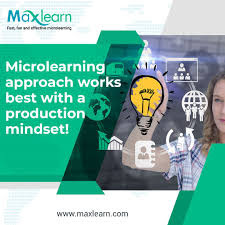Microlearning Platforms has emerged as a powerful educational approach that is transforming the way we learn and acquire new skills. Despite its growing popularity, there may still be some confusion surrounding its concept and application. Let's simplify the concept of microlearning and explore its various aspects to gain a deeper understanding of its significance in today's learning landscape.
What is Microlearning?
Microlearning Platform refers to the delivery of educational content in small, easily digestible units that are typically no longer than a few minutes in length. These bite-sized lessons focus on specific learning objectives and are designed to be consumed quickly and conveniently.
Key Elements of Microlearning:
Focused Learning Objectives: Microlearning courses are laser-focused on specific learning objectives, addressing a single topic or skill in each module. This ensures clarity and relevance for learners.
Short Duration: Microlearning content is concise and to the point, with each module typically lasting between 1 to 10 minutes. This makes it easy for learners to engage with the material, even in the busiest of schedules.
Engaging Multimedia: To enhance learner engagement, microlearning often incorporates multimedia elements such as videos, infographics, and interactive quizzes. These elements make the learning experience more dynamic and immersive.
Mobile Compatibility: Microlearning Tool is designed to be accessible on mobile devices, allowing learners to engage with the material anytime, anywhere. This flexibility is particularly beneficial for today's on-the-go learners.
Microlearning Platforms and Tools:
Microlearning Platforms: These platforms serve as centralized hubs for accessing microlearning content, offering a wide range of courses on various topics. They provide features such as mobile compatibility, progress tracking, and personalized recommendations to enhance the learning experience.
Microlearning Authoring Tools: These tools empower educators to create and customize microlearning content according to their specific needs. Features such as templates, drag-and-drop interfaces, and multimedia integration make course creation quick and efficient.
AI Powered Authoring Tool: Leveraging artificial intelligence, these AI Powered Authoring Tools automate the course creation process, generating personalized content recommendations and insights to enhance learning outcomes.
Gamified Learning Platforms: By incorporating game-like elements such as points, badges, and leaderboards, these platforms make microlearning more engaging and motivating for learners. Gamification encourages participation and progress while adding an element of fun to the learning experience.
Adaptive Learning Technology: This technology personalizes the learning experience for each individual learner, analyzing their performance and preferences to deliver tailored content and challenges that match their needs.
Microlearning Applications:
Employee Training: Microlearning is widely used for employee training purposes, allowing organizations to deliver targeted training on topics such as compliance, product knowledge, and soft skills.
Onboarding: Microlearning is effective for onboarding new employees, providing them with essential information and skills in a concise and engaging format.
Performance Support: Microlearning serves as a valuable resource for performance support, offering quick access to job aids, tutorials, and troubleshooting guides.
Conclusion:
In conclusion, Microlearning Application offers a flexible, engaging, and effective approach to learning and training in the digital age. By breaking down complex concepts into bite-sized modules and leveraging multimedia elements, microlearning caters to the needs of today's learners. Whether you're utilizing microlearning platforms, courses, tools, or software, understanding its concept and applications can help you harness its full potential and drive meaningful results in your organization.



